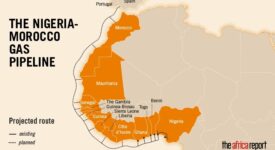Before the Covid-19 pandemic, the global tourism industry contributed US$9.2 trillion or 10.4%, to global GDP. It was considered one of the fastest-growing industries, accounting for at least one in every four new jobs globally. Fast forward to early 2022, and the pandemic has all but crippled the sector. The African region is down by a staggering 49,2%, having shed an estimated US$83 billion in GDP contribution, and lost up to 7.2 million industry jobs compared to 2019 levels. The impact of health crises such as SARS, H1N1 and Ebola weren’t on the scale of the disaster brought by the Covid-19 pandemic, whose impact was made worse by government interventions to mitigate the spread and effect of the virus. A combination of Covid-19 and the related drop in oil prices and tourism caused a setback for the North African economy in 2020, according to a report by the African Development Bank (AfDB). The difficulties suffered by trading partners, particularly in Europe, also affected the region.
While global tourism experienced a 4% upturn in 2021, compared to 2020, international tourist arrivals were still 72% below the pre-pandemic year of 2019, according to preliminary estimates by the UN World Tourism Organization (UNWTO). The rising rates of vaccination, combined with easing of travel restrictions due to increased cross-border coordination and protocols, have all helped release pent up demand. But the pace of recovery remains slow and uneven across world regions due to varying degrees of mobility restrictions, vaccination rates and traveler confidence. Europe and the Americas recorded the strongest results in 2021 compared to 2020 (+19% and +17% respectively), but still both 63% below pre-pandemic levels. Meanwhile, Africa saw a 12% increase in arrivals in 2021 compared to 2020, though this is still 74% below 2019.
But now travelers are slowly trickling back into North African tourist hotspots, such as Morocco, after Rabat announced the end of a flight ban to combat the surge in Omicron infections that emptied the Kingdom’s airports, beaches and tourist sights. The spread of the coronavirus has fallen in Morocco in February, making travel plans less risky. The North African kingdom has now welcomed back its first travelers from Europe following a relaxation of restrictions in February and France is once again the main source of visitors traveling to Morocco. This is good news for the kingdom as its tourism sector, having been one of the hardest hit by the pandemic, has slowly begun to recover. The news of the reopening of borders has gone hand in hand with a boom in flight and hotel bookings in Morocco.
“Since the announcement, we have counted between 4,000 and 5,000 bookings. In January, there were only 400-500,” says Nicolas Henin, deputy general commercial director of Transavia, a Dutch low-cost airline owned by Air France. “The announcement of the reopening of the borders had an immediate effect on bookings to Morocco — they exploded,” he added. France is once again the leading power in reactivating the market, as the country accounts for more than 30% of air traffic. On the flip side, the fact that the Alawi country is one of Africa’s top tourist destinations together with the boom in bookings are worrying travelers who may see the prices of airfare and accommodation rise. But Nicholas Henin says that prices remain stable up until May, although prospective visitors to Morocco may not be able to find discounted prices on last-minute bookings.
Article Tags:
AfDB · African Development Bank · airline · COVID-19 · Morocco · Omicron · pandemic · Tourism · UNWTO · World Tourism OrganizationArticle Categories:
EURO-MAGHREB AGENDA






